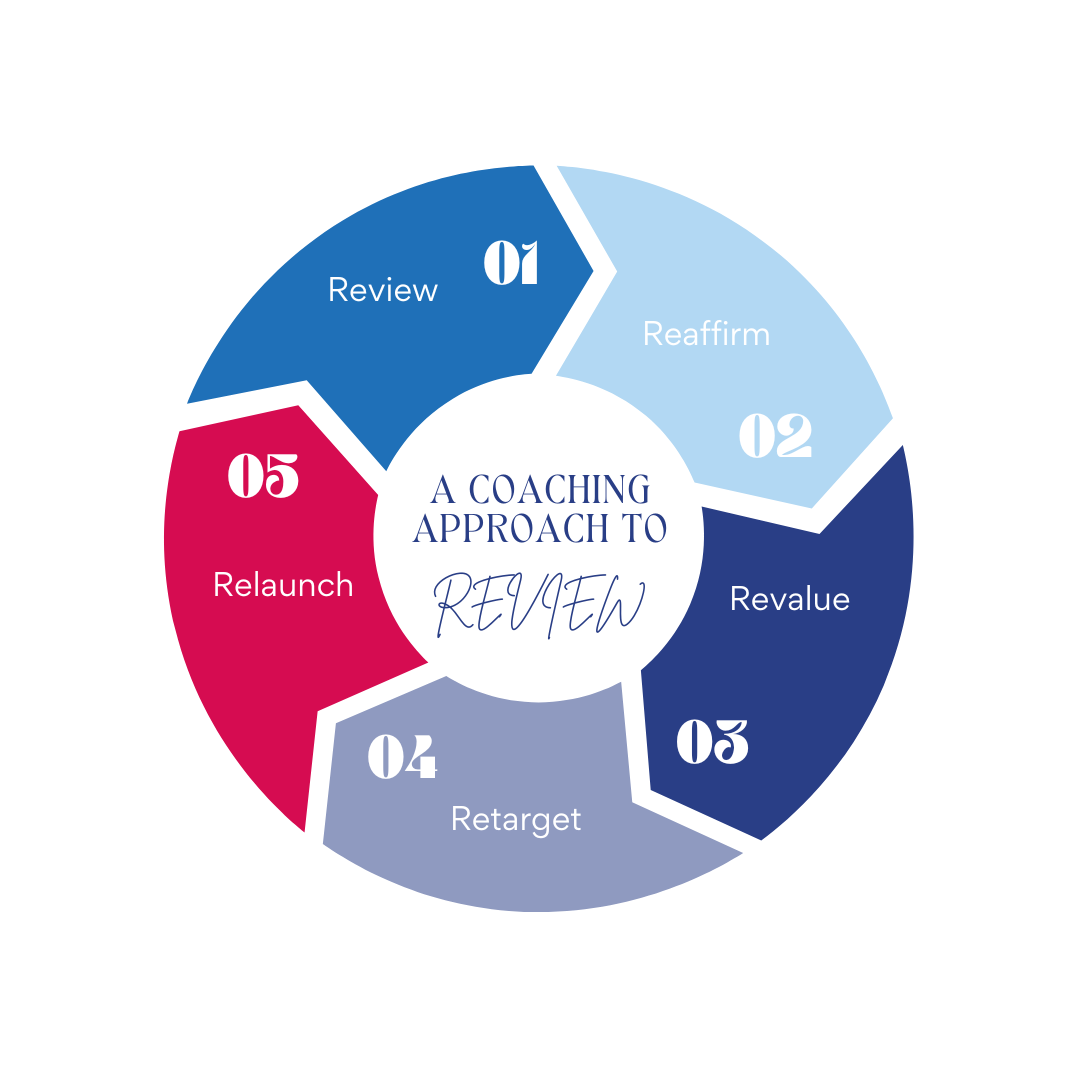Six Steps To Maintain Momentum
What I love about a coaching approach to conversations is that they are centred on the other person and inspire the expansion of thoughts, perceptions and ideas. Coaching conversations, by nature, are action-orientated, future-focused and solution centred.
Last month in an idea unpacked, I shared about the 20/80 relationship between goals and action plans. Coaching conversations facilitate clarity in creating transformational action plans centred and created by the coachee via the TACTIC framework (read more here), not the leader. We often fail to realise that informing, instructing and advising can be incredibly disempowering.
Coaching catalyses commitment because the coachee creates the change.
Many leaders think it is easier to advise than to take the time to coach others to find their solutions. Unfortunately, they don't realise they are wasting time instead of saving it. When you tell people what to do, you tap into their cognitive brain, where they can analyse your words using what they already know. They will likely agree with you if your suggestion relates to or affirms their current knowledge. They might have needed outside confirmation to fortify their confidence before acting. Offering ideas is an efficient way to guide people's actions. This is true. However, you risk making them dependent on you for answers or approval before acting. Therefore, you won't create independent thinkers. In addition, the results would be even less productive if they didn't seek your counsel. They might hear you but then forget what you said in a very short time. The cognitive brain uses short-term memory, which is limited by time and capacity.
Interestingly, I see it again and again. A conversation clarifies a goal; if it's an effective conversation, clarity regarding action steps will occur, and then the communication process stops. As a result, we see momentum lost. Challenges arise, and things get in the way of progress that causes the enthusiasm and energy present in the early stages to wane.
A system for change that works keeps the focus micro rather than macro and is an ongoing conversation, not a one-off conversation.
When I coach leaders and principals, I help my clients to generate a macro goal at the beginning of our coaching partnership. This goal begins with the end in mind and outlines where the client wants to get to.
We then build micro action steps throughout the partnership that are the stepping stones of change that create the system that will make the change sustainable. In our conversations, we identify the critical action that needs to be taken and place them in an appropriate order. Then we focus on the first thing first (more wisdom from Stephen Covey). We drill down on that first step and create an action plan. We use the Tactic Framework to get granular on that micro action. What makes the journey sustainable is we circle back regularly to review and refine. The review and refinement process is faster and far more effective when framed up as a conversation. Regular internal reflection never generates insights like a coaching approach to reflection and review. Here is why; our brains develop constructs and rules we operate with unconsciously. Neuroscientist Michael Gazzaniga says we get stuck in our automatic thought processing and fool ourselves into thinking we are acting consciously and willfully.
For the same reason, you can’t tickle yourself, your brain resists self-imposed testing of thoughts and reactions
An ongoing conversation is needed to energise action and create sustainable change. While your coaching conversations will create amazing action plans, we are still working on one step of many when working towards a goal. To maintain momentum, we need to have regular conversations to keep the action plan moving towards the goal.
It is not unusual to have a conversation and forget the follow-through. People leave the conversation energised and excited about the actions they are about to take, yet enthusiasm wanes over time. Often I see initial steps created and then nothing… the coachee is left to take action without ongoing support. Deliberate dialogue is needed to motivate momentum. We do this by using a coaching approach to keep the action plan on track. What it comes down to is constant clarity creates commitment.
As I mentioned in last month's post, more thought and effort must go into the action plan and its execution than setting the target. That's 20% on goal setting and 80% on action planning and execution. A regular revisit is a crucial aspect of the execution phase of an action plan. It elevates commitment and excites enthusiasm; thus, the coaching approach to Reflection and Review.
Five Steps To Maintain Momentum
Step one - Review
Review what has worked so far and the successes and challenges. We are wired to focus on what's not working. People can be overwhelmed when things go wrong. Without naming and speaking to the successes and challenges is how we gain clarity. We often need support to locate what has been successful.
Questions you can ask:
What progress have you made?
What have been your successes?
What's got in the way?
Step Two - Reaffirm
Reaffirm that the original goal is still relevant. As we take action on our action plan, we notice some things change. Often our perceptions and beliefs about things experience a recalibration that means that what we initially thought was important is not so anymore. Therefore, it is important to take a moment to explore if the original goal is still relevant.
Questions you can ask:
How does this goal connect with your values?
How will you feel when you achieve your goal?
How do you feel about the steps you have created in your action plan?
Step Three - Revalue
When an action plan and goal are linked to what we believe and value, we are connected to our purpose. For example, in his book Drive, Daniel Pink defines intrinsic motivation as when there is purpose, autonomy and a desire to grow. Therefore, Revalue is connecting the goal to your purpose.
Questions you can ask:
How does this goal connect with your values?
How will you feel when you achieve your goal?
How do you feel about the steps you have created in your action plan?
Step Four - Retarget
Using a coaching approach to locate and design the next step in the action plan keeps up the momentum. It is in supporting the identification of the next action step that we keep levels of enthusiasm and energy up.
Questions you can ask:
What do you need to start doing?
What do you need to stop doing?
What do you need to do differently?
What might get in the way?
What do you need to take action?
What support do you need?
What will your action look like?
Step Five - Relaunch
Get back on the road with renewed enthusiasm and energy
Take action.
Questions To Ask:
Do you have everything you need?
When will you take your next action?
When shell we reconnect to see how you are going?
Where to use the five steps
Anyone can use the five review steps as a coaching approach in the following scenarios.
Create action around the next steps towards a goal.
To check on progress on action points from a meeting. (Use this approach instead of the traditional approach to dealing with the minutes from the last meeting).
Identify next steps in learning - use with students to help them formulate their following action or learning step. Or for individuals to carve out the clarity of what comes next.
A moment of self-coaching is a review of progress towards the desired goal. (I use it all of the time)
Be courageous and try something new. You are doing great!
Tab


